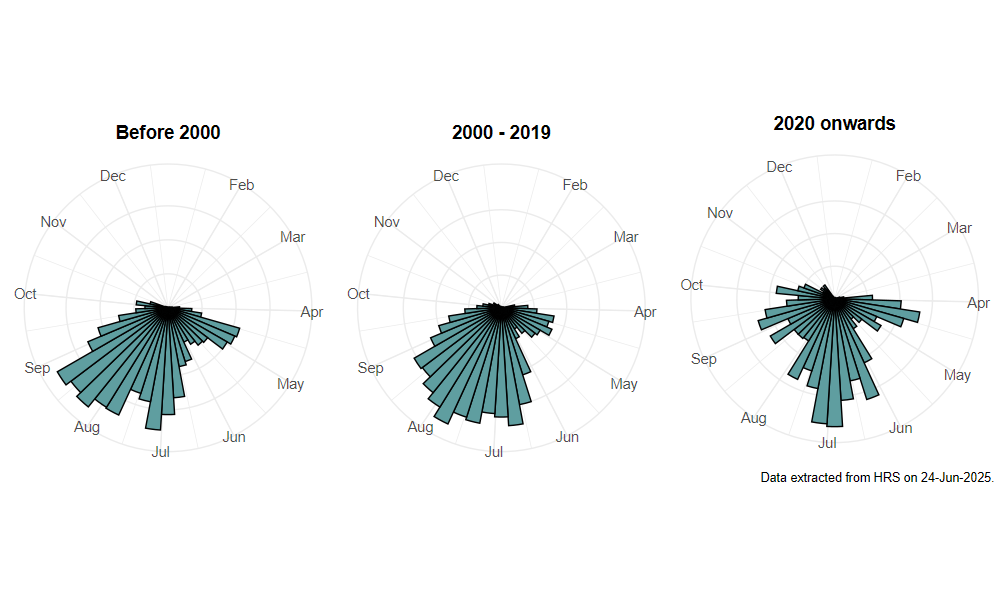Syrphus vitripennis Meigen, 1822
Identification
Identification difficulty = 5. ![]()
![]() according to Ball & Morris, 20241
according to Ball & Morris, 20241
Biology
The larva feeds on aphids on a wide range of trees and shrubs. It is found in all types of woodland, scrub and hedgerow situations including urban parks and gardens. Adults visit a wide range of flowers and males hover high in the canopy. It is believed to be highly migratory and numbers are probably reinforced in some years by immigrants from the continent.
Flight period
The following plots show the number of unique records per week excluding those reported to be of immature stages.

Distribution
Although common and widespread throughout Britain this species undergoes considerable fluctuations in abundance. These differences in abundance may be related to native populations being boosted by arrivals from the continent.

Trends
The following plots show the Frescalo TFactor vs year and a map of the rescaled frequency (all records) for the species.
-
Ball, S., & Morris, R. (2024). Hoverflies of Britain and Ireland. WILDGuides (3rd ed.). Oxford: Princeton University Press. ↩